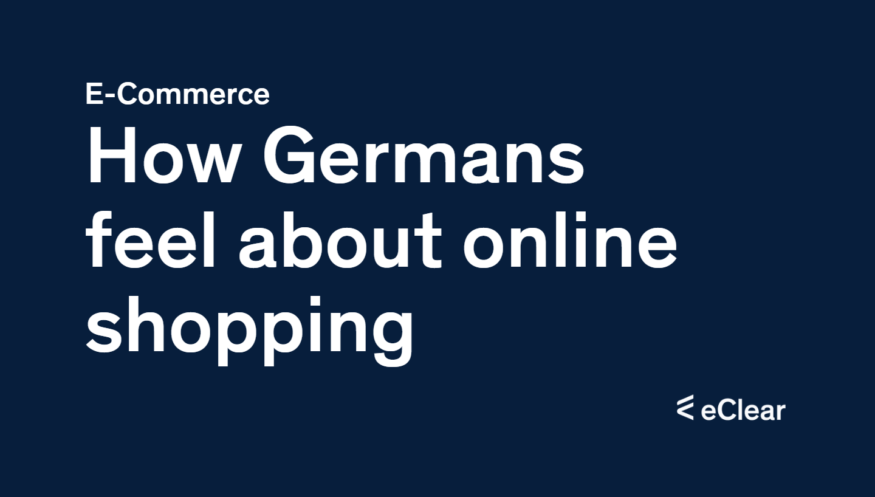Germans spend an average of EUR 295 per month online. Almost one in six (15 per cent) spend EUR 500 or more per month on online purchases of goods and services – including payments for in-app purchases, bills, or services and other online purchases. These are two of many exciting findings of PayPal’s E-Commerce Index 2022. The study examines Germans’ relationship with online shopping and payments based on a survey of 2,038 consumers conducted through mid-2022.
Online shopping is becoming increasingly popular across generations
According to the survey, almost two-thirds of Germans (59 per cent) shop online several times a week. On average, Germans make three online purchases weekly; 7 per cent even order online daily. The continuing trend towards online shopping is led by the younger generations, with Gen Z, those born between 1995 and 2010, and Millennials, those born between 1981 and 1995, making an average of five online purchases per week (6.5 purchases per week for Gen Z and 4.9 purchases per week for Millennials) and around three quarters shopping online many times a week (75 per cent Gen Z and 74 per cent Millennials).
With most people now making their purchases and payments online, PayPal’s E-Commerce Index highlights key trends and insights. The study shows that online shopping and e-commerce are changing and what businesses can do to keep up with consumers’ new habits and behaviours.
Social commerce: the new gold rush in retail
As smartphones have long become a part of our everyday lives, social commerce is also rising among consumers. The study shows: More than two-thirds (68 per cent) make online purchases or payments via their smartphone, and almost half (45 per cent) shop via a social media platform. The most popular platforms for social shoppers in Germany are YouTube (72 per cent), Facebook (57 per cent) and Instagram (53 per cent). Given that TikTok is becoming the search engine of choice for Gen Z1, the platform’s popularity for purchases is also increasing among 18- to 25-year-old social shoppers: more than half (66 per cent) have already ordered something via TikTok. Social media is an excellent resource for generating sales. Nearly 15 per cent shop via social media every week. Social shoppers spend an average of EUR 113 per month on their purchases. Businesses should be prepared to reach their customers through all sales channels, whether online, mobile or social media. Traders who promote their products and services on social media report that a quarter (24 per cent) of their sales are now made through social media platforms.
Even if consumers do not order directly via social media, they play an essential role in providing general product information. Sixteen per cent search for goods or services they want to buy, and around 19 per cent purchase something after seeing it on social media or a streaming platform.
Simple payment processes avoid shopping cart abandonment
While the report highlights consumers’ willingness to shop online, it also indicates that it is easy for retailers to lose customers in the sales process. But it also indicates that it requires great effort for retailers to lose customers in the sales process: Two-thirds (66 per cent) of respondents have abandoned a purchase at some point. The main reasons are that the website did not offer the preferred payment method (42 per cent), consumers have security concerns (23 per cent), and the payment process took too long (21 per cent). Thirty-seven per cent of shoppers are less likely to order online if the payment process is too long and confusing. But more than half (56 per cent) are more willing to purchase if the website offers their preferred payment method. Incidentally, one-fifth (21 per cent) add something to their shopping cart and wait for the website to send an offer or voucher before completing the purchase. “Recently, consumers have become much more familiar with online shopping. PayPal’s E-Commerce Index shows that consumers are expanding their search for the best product or service to meet their needs. But no matter how shopping habits change: People will continue to look for trusted brands that offer a straightforward, secure and hassle-free payment process,” says Jörg Kablitz, Managing Director of PayPal Germany, Austria, and Switzerland. Security concerns or trust issues at checkout are the main reasons 51 per cent of shoppers abandons a purchase. With four-fifths of consumers (82 per cent) trusting PayPal to keep their payments safe and secure, businesses should partner with providers that offer choice and convenience while ensuring security and fraud protection.
Cross-border shopping is appealing to consumers
The economic impact of the pandemic and a strong wave of inflation are contributing to an increase in cross-border shopping – with access to better prices (48 per cent) and products not available locally (38 per cent) cited by international shoppers as the main reasons for shopping abroad. The research shows that 82 per cent now shop internationally, and more than a third (38 per cent) of consumers’ online purchases are made from retailers outside their country. “Customers everywhere feel the strain of the current economic climate, from inflation to supply chain issues. In times like these, businesses must understand what their customers value to ensure that every step of the shopping experience is optimised – from the moment someone discovers the product they want to pay to the delivery time,” Kablitz continued.
Entering the metaverse: a new digital shopping paradigm
As social commerce grows in popularity, the next exciting opportunity for consumers is already available with the possibility of shopping in the metaverse. Brands that participate in the metaverse vision can offer a more immersive and interactive experience in real time. PayPal’s E-Commerce Index 2022 explores consumer attitudes towards new technologies and shows that almost a quarter (23 per cent) have already participated in the metaverse and another 22 per cent are considering it. In terms of shopping, more than a fifth (21 per cent) would be willing to shop in the metaverse, and 49 per cent of metaverse users have already bought, sold or exchanged digital goods or services. Furthermore, almost half (47 per cent) of Metaverse users have already visited a virtual shop, and 21 per cent would like their favourite shops to exist in virtual spaces or the metaverse.
Source: onlinemarktplatz.de







